- News
- Reviews
- Bikes
- Components
- Bar tape & grips
- Bottom brackets
- Brake & gear cables
- Brake & STI levers
- Brake pads & spares
- Brakes
- Cassettes & freewheels
- Chains
- Chainsets & chainrings
- Derailleurs - front
- Derailleurs - rear
- Forks
- Gear levers & shifters
- Groupsets
- Handlebars & extensions
- Headsets
- Hubs
- Inner tubes
- Pedals
- Quick releases & skewers
- Saddles
- Seatposts
- Stems
- Wheels
- Tyres
- Tubeless valves
- Accessories
- Accessories - misc
- Computer mounts
- Bags
- Bar ends
- Bike bags & cases
- Bottle cages
- Bottles
- Cameras
- Car racks
- Child seats
- Computers
- Glasses
- GPS units
- Helmets
- Lights - front
- Lights - rear
- Lights - sets
- Locks
- Mirrors
- Mudguards
- Racks
- Pumps & CO2 inflators
- Puncture kits
- Reflectives
- Smart watches
- Stands and racks
- Trailers
- Clothing
- Health, fitness and nutrition
- Tools and workshop
- Miscellaneous
- Buyers Guides
- Features
- Forum
- Recommends
- Podcast
review
 2022 Merida Scultura Team - crank.jpg
2022 Merida Scultura Team - crank.jpg£1,199.99
VERDICT:
Provides power data that wasn't always accurate, but Shimano has sorted the L/R balance issues
Simple setup
Added Bluetooth data transmission
Retains neat integration
Replaceable battery cover
Charger is the same as the one for Di2
Crank shape should be much better for third party power accuracy
Magnet required on frame
Accuracy issues
Weight:
752g
Contact:

This product has been selected to feature in road.cc recommends. That means it's not just scored well, but we think it stands out as special. Go to road.cc recommends
At road.cc every product is thoroughly tested for as long as it takes to get a proper insight into how well it works. Our reviewers are experienced cyclists that we trust to be objective. While we strive to ensure that opinions expressed are backed up by facts, reviews are by their nature an informed opinion, not a definitive verdict. We don't intentionally try to break anything (except locks) but we do try to look for weak points in any design. The overall score is not just an average of the other scores: it reflects both a product's function and value – with value determined by how a product compares with items of similar spec, quality, and price.
What the road.cc scores meanGood scores are more common than bad, because fortunately good products are more common than bad.
- Exceptional
- Excellent
- Very Good
- Good
- Quite good
- Average
- Not so good
- Poor
- Bad
- Appalling
The Shimano Dura-Ace R9200-P power meter is the redesign that many of us have been waiting for. Setup is dead simple, the design is compact, and there are smaller improvements such as a replaceable battery door and the fact that it uses the same magnetic charging cable as Di2. There were some accuracy issues with the power readings during testing, but everything appeared to be mostly consistent and the L/R balance is spot on.
Shimano's latest updates of its Dura-Ace and Ultegra groupsets included the launch of new power meters. The Dura-Ace R9200-P is a crank-based power meter that has seen the cranks designed around the power meter rather than the power meter gubbins being retrofitted to the cranks, as was the case with the Dura-Ace R9100-P units. Shimano has done this in an attempt to achieve better accuracy and reliability with the data that the dual-sided design spits out.
> Find your nearest dealer here
Our testing put the R9200-P up against Garmin's Rally pedals. We've compared the power data, cadence figures and the left/right balance scores of both.
Comparative testing
Let's tackle accuracy first, as that is the most important factor. I'll begin by saying that the Garmin Rally pedals I'm using for comparison performed well when Anna reviewed a separate set shortly after their launch. The set I have here were consistently reading lower than the R9200-P during my testing and the difference was significant. They were down by about the same margin when I compared to my two 4iiii power meters.
If we take a closer look at one of the intervals, the average power of the R9200-P is 335W while the Rally pedals measure 307W – 28W (or 8.4%) lower. There's something fishy going on there.
Rolling home from the same session, I decided to give it a nudge in a sprint. The Rally pedals are ever so slightly faster to pick up the effort, but the R9200-P registered a higher peak power of 942W (I'm not a sprinter). The Rally's 910W peak power is 32W (3.4%) lower.
I handed the R9200-P over to road.cc boss Dave Atkinson for a bit of extra testing. He set it up on his trusty Tacx Neo 2 that has been used to test a number of power meters. Here, the Shimano R9200-P read marginally under the Tacx, giving an average power of 241W for the session compared with 245W from the Tacx (granted, comparing averages across a whole session is of limited value).
The graph shows that the R9200-P tracks the Tacx relatively well at figures between 200-300W and is bang on at around the 150W mark. There is some separation in the figures at higher wattages and this is more noticeable when standing (third interval and sprints at the end). The separation seems to be more apparent the higher that you go, suggesting that the R9200-P is a percentage point or two different to the Tacx Neo 2.
We've never had any accurate crank or pedal-based power meter come in under the Tacx Neo's figures; it's usually the lowest. You put power into the bike through the pedals, with the cranks the next link in the chain, so you'd expect the Shimano R9200-P to read higher than a Tacx Neo because of drivetrain losses (there will always be greater losses the further along the chain you go). This leads us to think that the Shimano R9200-P is under-reporting, but as long as it's consistent under-reporting, that's not necessarily a huge deal.
Left/right balance
The asymmetry of the R9100-P drive-side crank design meant that Shimano and pretty much every third-party power meter maker that used the R9100 crankset had, at some point, a serious headache ensuring that the left/right power balance was accurate. The R9200-P drive-side crank features what looks like a symmetrical design, and the power balance looks to have been sorted.
On every dual-sided power meter I've used, I've been 50.5/49.5% or something around that. For this particular interval session, I was 50.6/49.4%, so nothing unusual there. Dave's test data (above) supported this, showing his usual pedalling imbalance of 52/48%.
Cadence
Often, if you're seeing issues in a set of power figures, you're going to see issues with the cadence data. Shimano still uses a magnet mounted to the frame to deliver cadence data, and it seems to be working nicely.
The R9200-P power meter was quick to pick up changes in my cadence, be that at the start of a sprint, pedalling out of a corner or as I nearly collapsed following an ill-advised fourth hill repeat.
Dave's data supports this, showing that the R9200-P is absolutely spot on. The R9200-P does well at all points, from the general riding cadence between 85-90rpm, to the slogging up a climb speed of around 55rpm, and finally Dave's higher-end leg speed of over 100rpm.
Consistency
I said at the start of the review that consistency in the data that a power meter provides is the important thing for me. Power data is just a set of numbers to work to, and as long as the figures are consistent, day to day, week to week, you'll be able to use the data to measure improvement.
> 12 reasons why you should buy, and use, a power meter
The Shimano R9200-P data has been consistent for me. Okay, it seems to read quite a lot higher than the Garmin Rally pedals and a little lower than the Tacx Neo 2, but quite consistently so, and we can't say for certain which is closest to the true power output. There have been no data dropouts, no weird spikes or troughs on the graphs, and the result is that I'd be happy to train using the data.
The key thing is that if you bought the R9200-P and did your initial testing to set your training zones, you could then train with confidence in the data that is appearing on your head unit.
Setting up
Away from the data that the R9200-P delivers, there is setting up and ease of use to consider. I'm going to assume you've gone ahead and bought a bike with this power meter already installed. With current supply issues, that's pretty much the only way you're going to get one at the moment, so I won't cover the installation procedure that is identical to the last version's and therefore pretty straightforward.
The good thing about this is that while you can hook the power meter up to your phone via the eTube app, you don't have to. Turn on your bike computer – I've got Garmin's Edge 1030 Plus – head to the bit where you search for sensors and after a quick half-turn of the cranks, the unit will show up.
Calibration should, according to the app, be done with the drive-side crank in the six o'clock position, and if everything is rosy you'll get a reading of '5050'. You can also do the zero offset via the small button on the unit itself. It is incredibly simple.
And that's it. You should calibrate your power meter before every ride, but that is standard practice.
Charging
Charging is simple and is done using the same cable that comes with the latest 12-speed Di2 groupsets. That might sound like a small feature, but it is good to have the simplicity of a single cable. Shimano says the power meter will run for over 300 hours and you won't be surprised to learn that I haven't got close to needing to recharge.
Another smaller change is that the cover for the charging port is now replaceable, which is good because it still doesn't feel like the most robust design. Everything inside is claimed to be waterproof, though, so you shouldn't need to worry.
ANT+ and Bluetooth
Shimano has continued with the ability to broadcast power data via ANT+ or BLE, whereas it added BLE power broadcasting to the R9100-P after about a year of the power meter being available.
The daily ride has seen the R9200-P work quietly with no connectivity or data issues; it's a very easy power meter to live with.
Value
First up, I'd like to open a can of worms by debating the need for dual-sided data for the vast majority of riders. Okay, independent L/R data can help to identify an issue before it becomes an injury, but if you normally ride pain-free, chances are that a left-only power meter will give you the data you require at a fraction of the price.
The R9200-P raises the price of the standard R9200 chainset from £549 to £1,199. That's a decent jump, so it might be worth exploring a left-side only add-on from Stages or 4iiii if you haven't got the cash for the R9200-P.
Currently, the third-party brands that install their own power-measuring tech into Shimano's cranksets are yet to release their prices or availability. It'll also be quite a while before we know either, so comparing value is a little tricky right now.
The good news is that the R9200-P has retained the £1,199 price tag of the R9100-P, so there's no nasty price hike with the 12-speed model.
Conclusion
Shimano's Dura-Ace R9200-P power meter appeared to deliver consistent data, but was overreading quite a lot compared to a comparison power meter. The cadence and L/R balance data is perfectly usable for daily training. The unit is very easy to live with thanks to the quick connection to head units, and an improved Shimano eTube app makes updates a doddle. The price has stayed the same as the previous generation.
Verdict
A good power meter with some accuracy issues, but easy to train with and Shimano has sorted the L/R balance issues
road.cc test report
Make and model: Shimano Dura-Ace FC-R9200-P power meter
Size tested: 52/36 - 172.5
Tell us what the product is for and who it's aimed at. What do the manufacturers say about it? How does that compare to your own feelings about it?
Shimano says: 'The Dura-Ace FC-R9200-P power meter brings everything a data-driven cyclist could want. Its integrated, waterproof design brings all-weather reliability while delivering accurate information including left/right balance. A rechargeable Li-ion battery is user-friendly and Bluetooth LE and ANT+ connectivity ensure easy setup.'
Tell us some more about the technical aspects of the product?
From Shimano:
Integrated, waterproof, and rechargeable Li-ion battery (Up to 300+ hours of ride time)
< 1.5% strain gauge accuracy throughout the entire calibration range (depending on ANT+/Bluetooth LE settings)
Simple and intuitive zero offset calibration with switch on the transmitter
Active temperature compensation
Rate the product for quality of construction:
9/10
Rate the product for performance:
9/10
Rate the product for durability:
9/10
Rate the product for weight (if applicable)
8/10
Rate the product for value:
5/10
Tell us how the product performed overall when used for its designed purpose
Provided largely consistent datacompared with another device
Tell us what you particularly liked about the product
The simplicity for the user is the best thing about this power meter.
Tell us what you particularly disliked about the product
There wasn't much I disliked about this.
How does the price compare to that of similar products in the market, including ones recently tested on road.cc?
The price remains unchanged from the R9100-P version, which is great to see.
Did you enjoy using the product? Yes
Would you consider buying the product? I'd probably get the Ultegra version.
Would you recommend the product to a friend? Yes
Use this box to explain your overall score
Shimano's Dura-Ace R9200-P power meter delivers consistent data, but was overreading quite significantly in a comparison test with the Garmin Rally pedals we used them alongside. The connectivity is great and it's simply an easy power meter to live with.
About the tester
Age: 27
I usually ride: Specialized S-Works Tarmac SL7 My best bike is:
I've been riding for: Under 5 years I ride: Most days I would class myself as: Expert
I regularly do the following types of riding: road racing, time trialling, cyclo cross, commuting, club rides, general fitness riding, I specialise in the Cafe Ride!
Latest Comments
- chrisonabike 18 min 24 sec ago
Hmm... I think that needs tweaking. People do get passionate about keeping local things, but:...
- brooksby 42 min ago
There are comments on the Bristol Post about this along the lines of how pedestrians only ever have to wait a few seconds so why change anything....
- parcours 1 hour 2 min ago
Anything is possible with a custom build. We do a reasonable number of track builds each year & can offer it on any road model in the line-up
- Condor Andy 1 hour 9 min ago
Velogames' Spring Classics comp is open and is more in tune with the road.cc game. You have 24 transfers to use between MSR and LBL. There are also...
- chrisonabike 1 hour 5 min ago
Yup - while I'm normally "more bollards" this needs nuance....
- NPlus1Bikelights 1 hour 42 min ago
Mildly interested. My knees don't like the rotations needed for unclipping, I use well made Japanse MKS half clips on a commuter bike. They do...
- Born_peddling 2 hours 5 min ago
Was just about to say UCI corrupt? Never! 🤣
- Miller 2 hours 6 min ago
Sounds great but worth noting that the Osmo Action 4 can be had for £189 at the moment.
- hawkinspeter 2 hours 7 min ago
Campaigners condemn Liveable Neighbourhood vandalism:...
- Pink Duck 2 hours 21 min ago
The Cyclists Dismount signage is now up, not that anyone pays any attention to it.

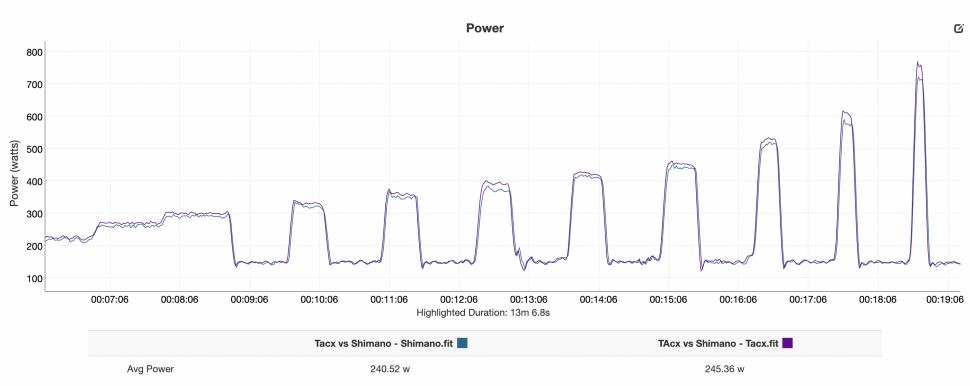

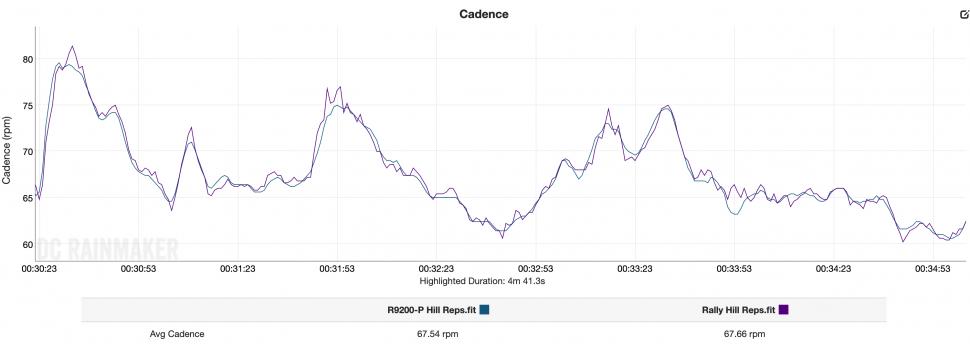
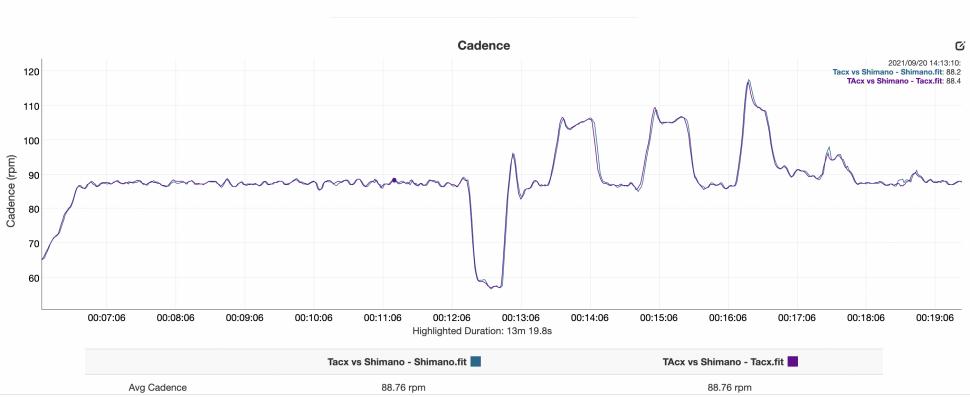
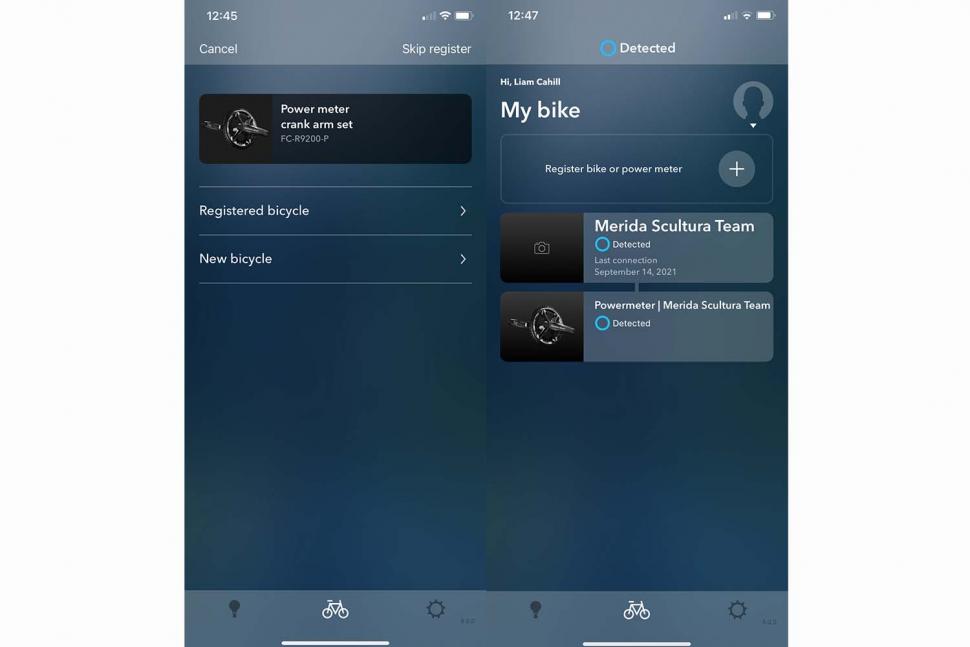


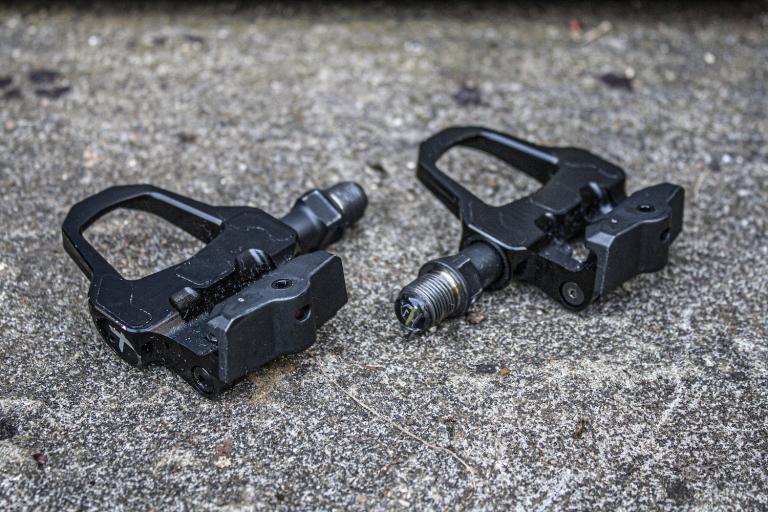
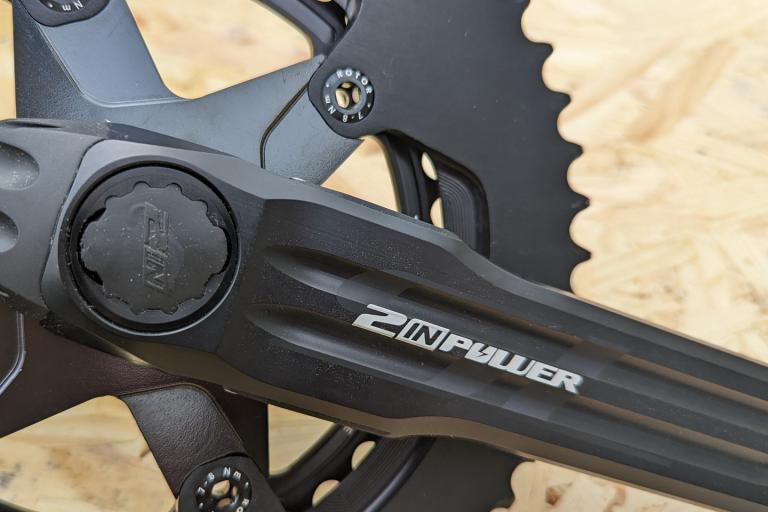


Add new comment
2 comments
I will wait for DC Rainmaker to see how it fairs in edge cases. But Garmin pedals also proved to have their quirks. That said still a magnet ??? The crank is as heavy as about any cheaper third party. I ride power2max for years and it always proves to work and numbers match in all condition between my bikes. By yourself an pw2max NGeco pw, rotor crank with carbon arms and praxis rings. Cheaper, rock solid and about 20% lighter ...
Accuracy issues noted by DCRainmaker